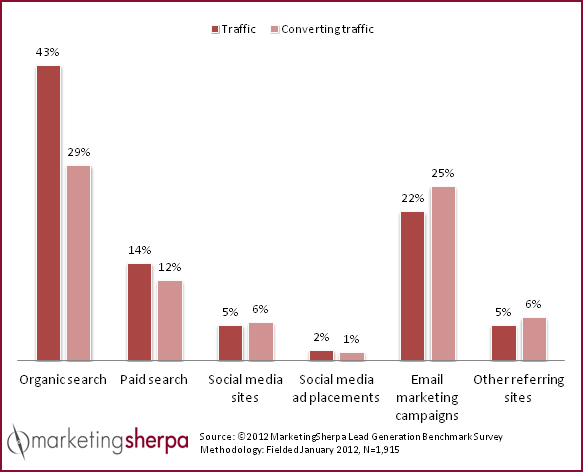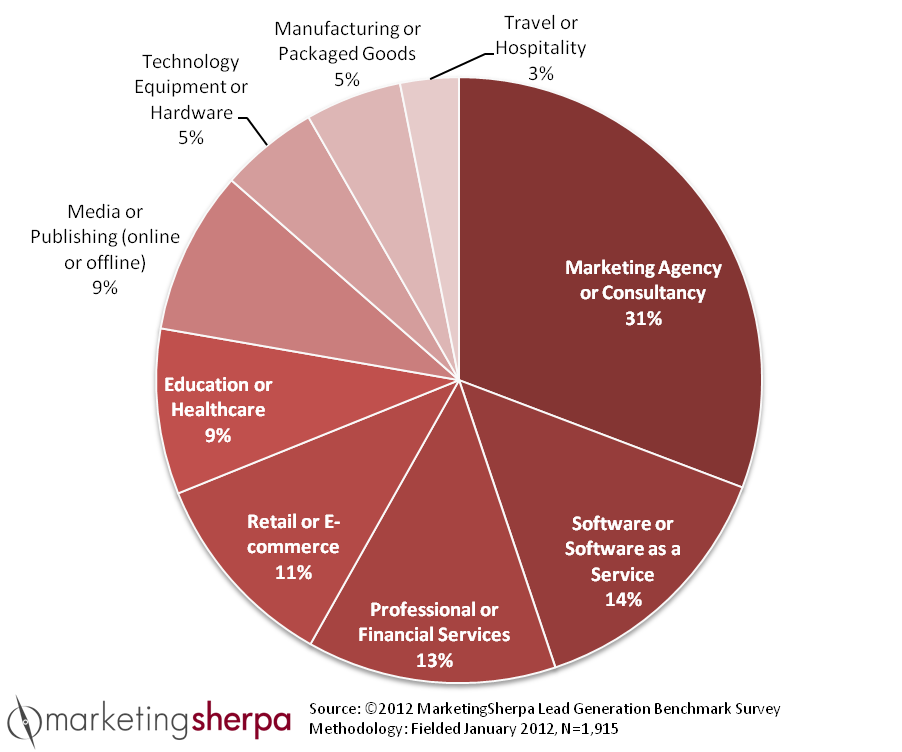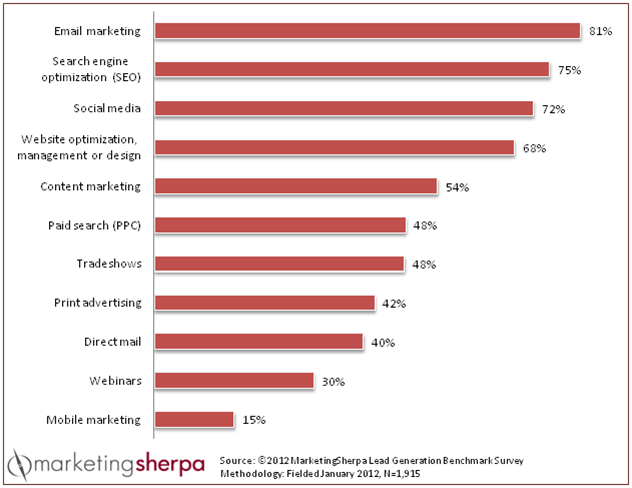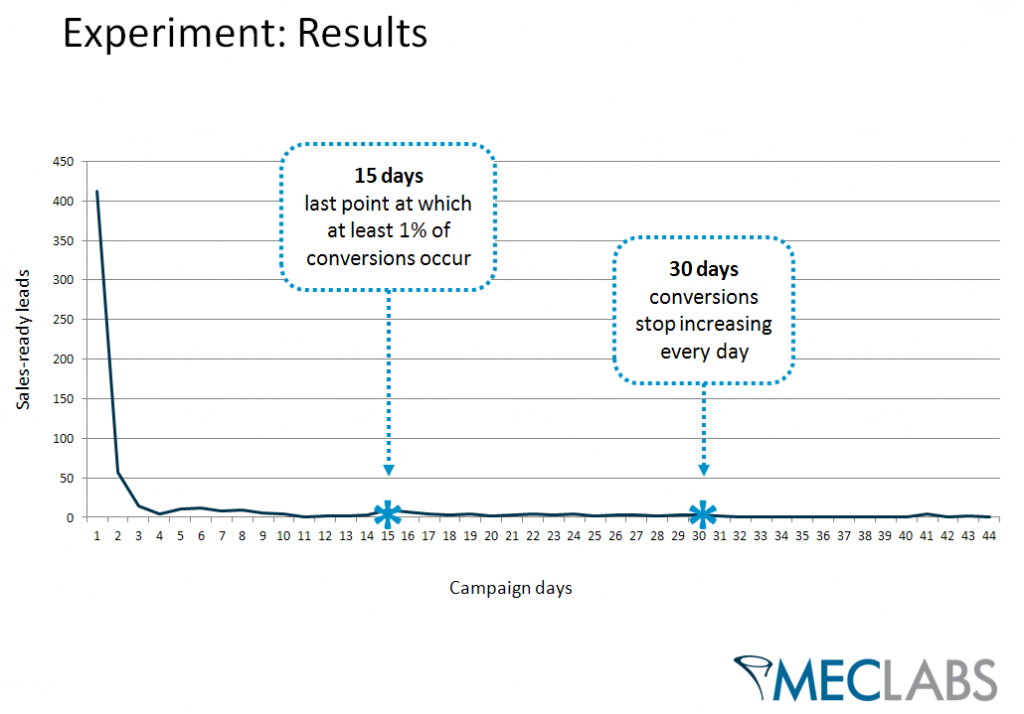Lead Generation: 43% say organic search drives most traffic, but only 29% say it drives most conversions
Originally published on B2B LeadBlog
In the MarketingSherpa 2012 Lead Generation Benchmark Report, we asked 1,915 marketers about traffic volume and traffic that converts. Here’s what the data revealed …
Q: Which of the following sources generates the GREATEST VOLUME of traffic coming to your site?
Q: Which of the following sources generates traffic with the greatest CONVERSION RATES on your site?
In the chart above, the darker bar on the left shows response to the “greatest volume” survey question, while the lighter bar on the right shows response to the “conversion rate” question. Let’s look at what your peers thought of this data …
Start with SEO and Email Marketing
“We have over 1,500 clients, and they concur with your research findings … a lot of people in the market over the last two years have been asking me about what they should be doing on social media,” said Tracey Voyce, Director, Bloomtools. “Now it has its place, but, everyone, please don’t invest, as a company, too much time and money in these areas until you have mastered SEO and email marketing, as they keep on delivering time after time.”
“It’s an interesting study, but worth remembering, and I am in complete agreement with Tracy that getting the basics sorted first is a must,” said Daniel Lack, Email Marketing Specialist, Intelligent Visual Communications. “Yes, SEO brings in more traffic, but in terms of cost against conversions, direct marketing has to be the starting point, with email campaigns consistently providing the best ROI — less traffic but similar conversions, and at a much lower cost.”
“Obviously SEO and social have their place and are effective marketing tools, but it’s about finding mediums that work for you rather than finding a way your business can use a medium,” Daniel said. “Just because it’s available doesn’t necessarily mean it’s right for your company or worth a huge investment in not just money, but time as well.”
Industry breakdown
“Great data. Thanks for sharing this,” said Fern Yit Lim, Online Sales Manager, Lufthansa. Based in Singapore, Fern was interested in industry and country breakdowns.
“Just curious in which industry and country was the data collected? Because the traffic and conversion rate from social channels really surprised me. In our developing markets, paid search still has the highest conversion rate, and in developed markets, it will be email for sure.”
This survey was fielded internationally. Here is a breakdown of respondents by industry …
Q. Which best describes the type of organization you work for?
Reality-based metrics
And, I’ll give the final word to Debra Kline, President, Business Wise: “Thanks to MarketingSherpa for reality-based metrics rather than hype. The hype often turns us away from what “works” to what’s new or what’s cool. Here’s three cheers for reality!”
If you’d like to be featured in a future blog post, simply sign up for the free MarketingSherpa Chart of the Week newsletter and share your actionable advice on a future marketing industry chart.
Related Resources:
Webinar Replay: How to Integrate Social Media/SEO to Drive More Leads and Increase Marketing ROI
B2B Social Media Marketing: Focus on leads, not likes
Marketing Research Chart: Most effective traffic sources for website conversion




















